Electrical energy is a form of energy that is associated with the forces acting on electrically charged particles and their movement. It is generated by the movement of electrons from one point to another, creating a flow of electric charge. This flow of charge can occur in various systems, such as electrical circuits, batteries, or generators. Electrical energy is a fundamental form of energy that powers numerous devices and systems, playing a vital role in our modern world. It can be converted into other forms of energy, such as light, heat, or mechanical energy, making it versatile and widely utilized in various applications, from powering homes and industries to driving electronic devices and machinery.
Examples
Laptop
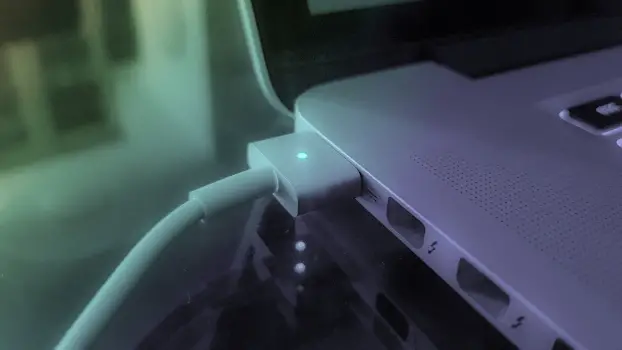
In a laptop, electrical energy powers the device’s various components. When you plug in the laptop, electrical energy from an outlet is converted into direct current (DC) by the power adapter. This electrical energy is then used to charge the laptop’s battery. When the laptop is operating on battery power, the stored electrical energy is converted back into electrical power, providing energy for the laptop’s functions. The central processing unit (CPU), memory, display, and other components all rely on electrical energy to perform tasks, showcasing how this form of energy is crucial for the operation of portable electronic devices.
Refrigerator
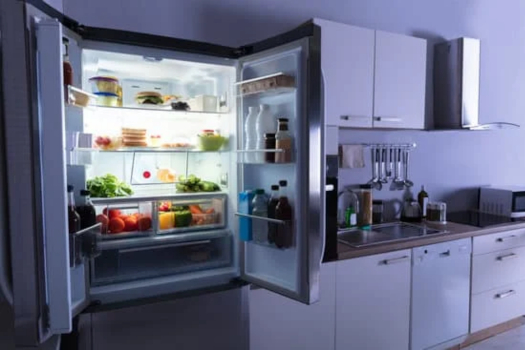
A refrigerator is an essential household appliance that uses electrical energy to maintain a low temperature for food storage. The electrical energy powers a compressor, which circulates a refrigerant through coils. The refrigerant undergoes a cycle of compression and expansion, absorbing heat from the interior of the refrigerator and releasing it outside. This process ensures that the temperature inside the refrigerator remains lower than the surrounding environment, preserving perishable items. The integration of electrical and refrigeration technologies makes refrigerators a crucial element in modern kitchens, contributing to food preservation and energy efficiency.
Hair dryer

A hair dryer is a device that converts electrical energy into thermal energy to dry and style hair. When you turn on a hair dryer, electrical current flows through a heating element, typically made of nichrome wire. The resistance of the wire generates heat, and a fan blows air over the heated element, carrying the heat to the hair. The electrical energy is thus transformed into thermal energy, providing the necessary warmth to evaporate water from wet hair and achieve the desired styling effects.
Electric train
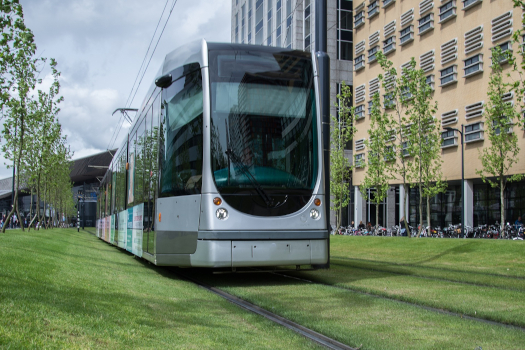
An electric train is a mode of transportation powered by electricity. Electrical energy is supplied to the train through overhead wires (catenary system) or a third rail. The train’s electric motor, typically powered by direct current (DC) or alternating current (AC), drives the wheels to propel the train forward. Electric trains offer environmental advantages as they can be more energy-efficient compared to traditional diesel-powered trains. The electrification of train systems showcases the use of electrical energy for sustainable and efficient public transportation, reducing emissions and reliance on fossil fuels.
Video game

A video game is an interactive electronic entertainment system that combines various technologies to deliver a virtual experience. Electrical energy powers the gaming console or computer, providing the necessary energy to run the central processing unit (CPU), graphics processing unit (GPU), and memory. Input devices like controllers are also powered by electricity. The game’s visuals and audio are processed and displayed on a screen or monitor. Furthermore, network connectivity in modern games relies on electrical signals for online multiplayer experiences. The immersive nature of video games showcases the integration of electrical and computing technologies, creating engaging and dynamic virtual worlds.
Toaster
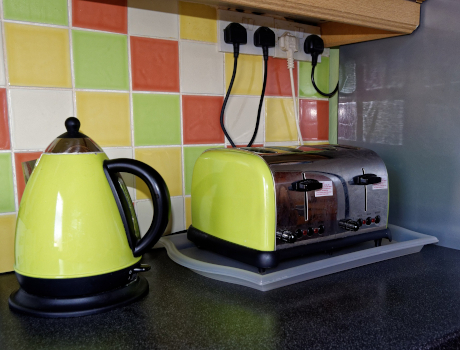
A toaster converts electrical energy into thermal energy to toast bread. When you plug in a toaster and set it to operate, electrical current flows through heating elements, typically made of nichrome wire. The resistance of these elements generates heat, which is then applied to the bread slices. The controlled application of heat results in toasting, transforming the electrical energy into thermal energy to achieve the desired level of browning on the bread.
Vacuum cleaner

A vacuum cleaner utilizes electrical energy to create suction and perform cleaning. When you plug in a vacuum cleaner, the electrical energy powers a motor, typically located near the suction mechanism. The motor drives a fan or impeller, creating a flow of air. This airflow generates a pressure difference, resulting in suction that lifts dirt and debris into the vacuum cleaner’s collection bag or container. The electrical energy is essential for powering the motor and fan, demonstrating how electrical energy is harnessed for practical applications in household cleaning.
Air conditioning
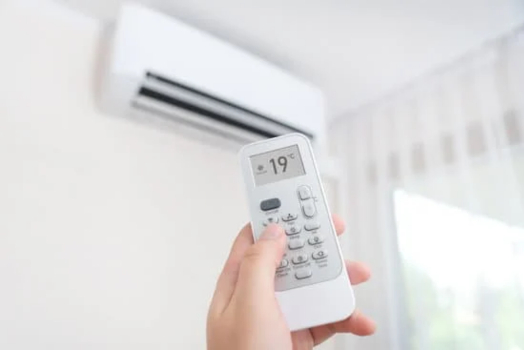
Air conditioning systems use electrical energy to transfer heat from inside a building to the outside, creating a cooler indoor environment. The process involves a refrigerant circulating through coils. The electrical energy powers a compressor, which increases the pressure and temperature of the refrigerant. As the refrigerant moves through the coils, it absorbs heat from the indoor air, and then, in the outdoor unit, releases that heat to the outside air. The electrical energy is crucial for the entire refrigeration cycle, enabling the transfer of heat and creating a comfortable, cooled space indoors.
Electric stove

An electric stove utilizes electrical energy to generate heat for cooking. When you turn on an electric stove, electrical current flows through a resistor element, typically made of metal, which has high electrical resistance. The resistance of the element causes it to heat up, and this heat is then transferred to the cookware and ultimately to the food. The conversion of electrical energy into heat energy is highly efficient, allowing for precise temperature control and quick responsiveness. Electric stoves are a common example of how electrical energy can be transformed into thermal energy for cooking applications in a controlled and convenient manner.
Television

A television uses electrical energy to power various components that create and display images and sound. When you turn on a television, electrical energy is supplied to the circuitry, including the display panel and audio components. In modern televisions, liquid crystal displays (LCDs), light-emitting diodes (LEDs), or other technologies are employed to produce images. The electrical energy is transformed into light and sound energy, allowing viewers to enjoy audiovisual content. The efficiency and capabilities of televisions have evolved with advancements in electrical and display technologies, showcasing the diverse applications of electrical energy in entertainment devices.
Light bulb

A light bulb converts electrical energy into visible light and heat. When you turn on a light bulb, electrical current flows through a filament, typically made of tungsten. The resistance of the filament generates heat and produces light as a byproduct. The incandescent light bulb demonstrates the conversion of electrical energy into both thermal energy and light. Other types of bulbs, such as LED or fluorescent, also involve the conversion of electrical energy into light and are more energy-efficient, emitting less heat in the process.
Radio
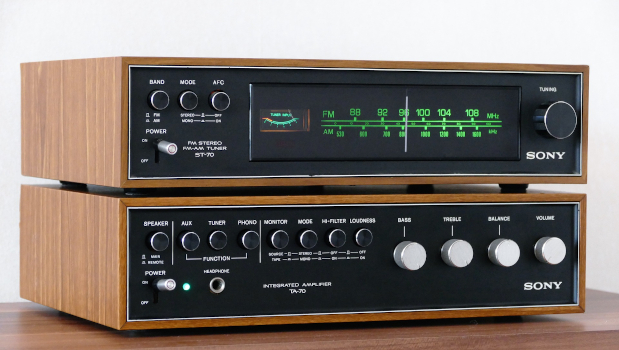
A radio is an electronic device that uses electrical energy to receive, amplify, and reproduce radio frequency signals to provide audio content. Electrical energy powers the radio’s components, including the tuner, amplifier, and speakers. The tuner captures radio frequency signals, and the amplifier enhances the signal for the speakers to produce sound. In battery-operated radios, electrical energy is supplied by batteries, while plug-in radios draw power from an electrical outlet. Radios illustrate the conversion of electrical energy into radio waves and ultimately into audible sound, offering a widespread and enduring medium for entertainment and information.
Fan
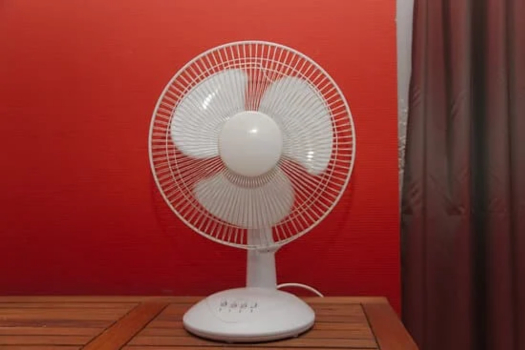
Electric fans convert electrical energy into mechanical energy to create airflow for cooling. When you turn on a fan, electrical current powers a motor that drives the rotation of the fan blades. The spinning blades create a flow of air, providing a cooling effect in the surrounding environment. Electric fans are a simple yet effective application of electrical energy, offering a practical solution for maintaining comfort and improving air circulation in various settings, from homes to offices.
Microwave oven

A microwave oven is a kitchen appliance that uses electrical energy to generate microwaves for cooking or heating food. The electrical energy powers a magnetron, a device that produces high-frequency microwaves. These microwaves penetrate food, causing water molecules to vibrate and generate heat through friction. The transformation of electrical energy into microwave radiation allows for quick and efficient cooking, showcasing the application of electrical technology in modern kitchen appliances.
Headphone

Headphones convert electrical energy into sound waves for personal audio experiences. When connected to a device, such as a smartphone or music player, electrical signals representing audio data are sent through the headphone cable. These electrical signals are then transformed into sound by the headphone’s transducers, which can be dynamic drivers, balanced armature drivers, or other technologies. The electrical energy from the audio source is crucial for producing the vibrations in the headphone’s diaphragm, resulting in the creation of audible sound waves that reach the listener’s ears.
Electric motor
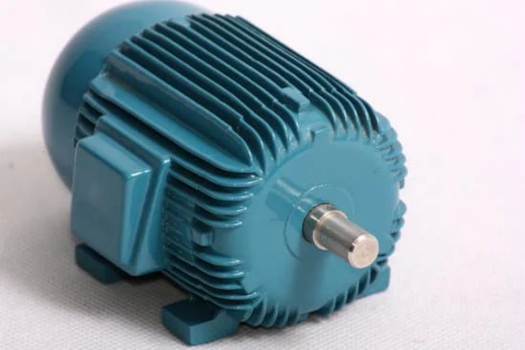
An electric motor is a device that converts electrical energy into mechanical energy. Electrical energy is supplied to the motor through wires connected to a power source. Inside the motor, the electrical current interacts with magnetic fields, leading to the rotation of a rotor. This rotational motion is harnessed for various applications, from powering appliances like fans and washing machines to driving industrial machinery. Electric motors play a crucial role in automation and energy conversion, exemplifying the efficient transformation of electrical energy into useful mechanical work.
Washing machine

A washing machine uses electrical energy to power various components for cleaning clothes. When you start a washing machine cycle, electrical energy is supplied to the motor, which drives the drum’s rotation. Additionally, electrical energy heats the water if a warm or hot water cycle is selected. The detergent dispenser, water inlet valves, and other features also rely on electrical components. The efficient use of electrical energy in washing machines highlights how technology has automated and optimized the process of cleaning clothes in households.
DVD player
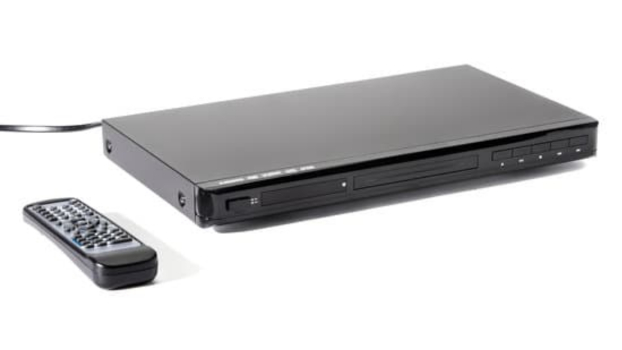
A DVD player is an electronic device that plays digital video discs (DVDs). Electrical energy powers the player, and when a DVD is inserted, the player uses a laser diode to read data encoded on the disc. The electrical signals from the laser diode are then converted into audio and video signals for playback on a connected television or display. Additionally, electrical components control the player’s functions, such as play, pause, and fast-forward. DVD players demonstrate the application of electrical and optical technologies in home entertainment, offering a convenient way to watch movies and other digital content.
Mixer grinder

A mixer grinder is a versatile kitchen appliance that combines several functions, including mixing, grinding, and blending. Electrical energy powers the motor, which drives the rotating blades or attachments inside the appliance. The user can control the speed and operation of the mixer grinder to achieve the desired consistency for food preparation. The integration of electrical technology in mixer grinders enhances efficiency in the kitchen, offering a convenient and time-saving solution for various culinary tasks.
DSLR camera

A DSLR (Digital Single-Lens Reflex) camera combines optical and digital technologies for advanced photography. The camera uses a mirror mechanism to direct light through a lens into an optical viewfinder, allowing the photographer to compose the shot. When the shutter button is pressed, the mirror flips up, and the image sensor captures the scene’s digital information. Electrical energy powers the camera’s components, including the image sensor, processor, autofocus system, and LCD screen. DSLRs exemplify the integration of optical precision and digital capabilities, offering photographers a versatile tool for capturing high-quality images.
Night lamp

A night lamp, or night light, is a small illumination device designed for use during the night. Electrical energy powers the lamp, typically through a bulb or LED. The lamp is designed with a soft, low-intensity light source, providing enough illumination to navigate in the dark without disturbing sleep. Some night lamps may include features like adjustable brightness or color temperature. Electrical technology ensures energy-efficient and safe operation, offering a comforting and practical solution for creating a subdued and relaxing nighttime environment.
Car battery
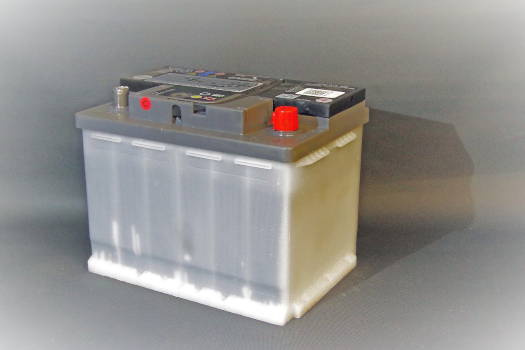
A car battery is a rechargeable energy storage device that provides electrical energy to start the vehicle’s engine and power various electrical components. The battery stores electrical energy in the form of chemical energy through a reversible electrochemical reaction. When the engine is started, the battery releases electrical energy to the starter motor. Additionally, the car battery powers lights, electronics, and accessories when the engine is not running. The car battery exemplifies the vital role of electrical energy in automotive systems, ensuring reliable vehicle operation.
Cell phone
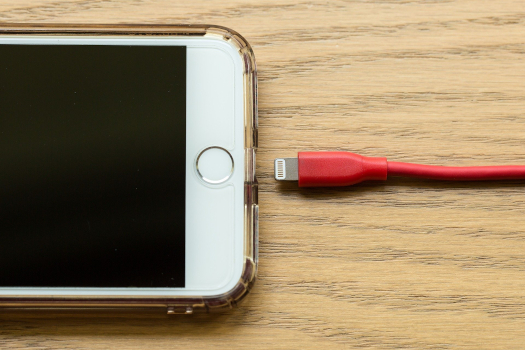
A cell phone is a multifunctional handheld device that integrates various technologies for communication, computing, and entertainment. Electrical energy powers the phone’s components, including the central processing unit (CPU), memory, and display. The phone relies on batteries or a rechargeable power source to store and deliver electrical energy for its operation. Cellular technology enables wireless communication, and additional features such as cameras, sensors, and touchscreens showcase the versatility of electrical and computing technologies in a compact and portable form. The integration of these technologies allows users to make calls, send messages, access the internet, and use a wide range of applications.
LED flashlight
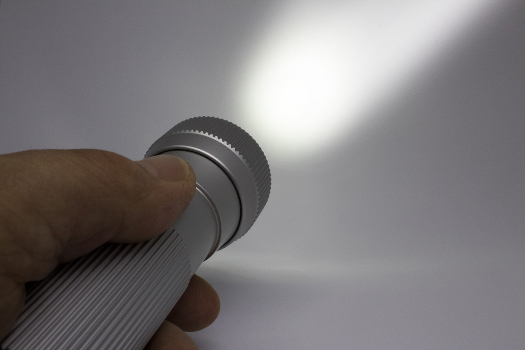
An LED flashlight is a portable lighting device that uses light-emitting diodes (LEDs) to produce light. Electrical energy from batteries powers the LED, causing it to emit light. LED flashlights are energy-efficient, durable, and compact compared to traditional incandescent flashlights. The electrical energy is efficiently converted into visible light, providing a reliable and long-lasting source of illumination. LED flashlights highlight the advancements in lighting technology, offering users a practical and energy-efficient solution for various situations, from outdoor activities to emergency situations.
Wristwatch
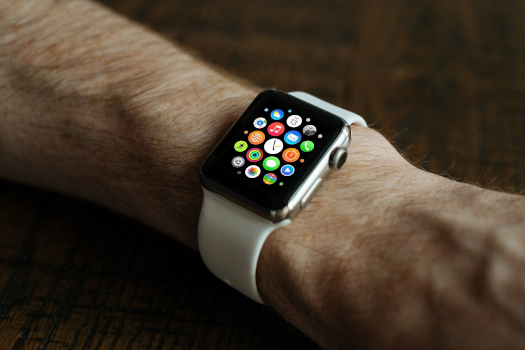
A wristwatch is a compact timekeeping device that often incorporates both mechanical and electronic components. Traditional wristwatches use mechanical movements driven by a mainspring, while modern ones often utilize electronic quartz movements. Electrical energy, typically provided by a small battery, powers the quartz crystal oscillator in electronic watches. The oscillator’s vibrations are counted to measure time accurately. Additionally, digital watches may include LED or LCD displays, further showcasing the incorporation of electrical technology in timekeeping devices.
Equation

The electrical energy equation, expressed as E = P × t, establishes a relationship between the electrical energy (E) consumed or produced by a device, the electrical power (P) at which it operates, and the duration of operation (t). By using this equation, one can calculate the amount of electrical energy consumed or produced by a device based on its electrical power and the duration of operation.
Practice problems
Problem #1
Calculate the electrical energy consumed by a 60 W electric bulb when it is switched ON for 5 minutes.
Solution
Given data:
- Electrical power, P = 60 W
- Time, t = 5 minutes = 300 s
- Electrical energy, E = ?
Applying the formula:
- E = P × t
- E = 60 × 300
- E = 18,000 J
Therefore, the electrical energy used by an electric bulb is 18,000 J.
Problem #2
A 50-inch LED TV with a power rating of 100 W operates for 20 minutes. Determine the electrical energy consumed by the television.
Solution
Given data:
- Electrical power, P = 100 W
- Time, t = 20 minutes = 1200 s
- Electrical energy, E = ?
Applying the formula:
- E = P × t
- E = 100 × 1200
- E = 120,000 J
Therefore, the electrical energy used by a LED TV is 120,000 J.
Problem #3
Calculate the electrical energy used by a 500 W microwave oven that operates for 10 minutes.
Solution
Given data:
- Electrical energy, E = ?
- Electrical power, P = 500 W
- Time, t = 10 minutes = 600 s
Applying the formula:
- E = P × t
- E = 500 × 600
- E = 300,000 J
Therefore, the electrical energy used by a microwave oven is 300,000 J.
Problem #4
What is the amount of electrical energy consumed by a 1000 W water heater when it is turned ON for 6 minutes?
Solution
Given data:
- Electrical energy, E = ?
- Electrical power, P = 1000 W
- Time, t = 6 minutes = 360 s
Applying the formula:
- E = P × t
- E = 1000 × 360
- E = 360,000 J
Therefore, the electrical energy used by a water heater is 360,000 J.
Related
More topics
- Thermal energy
- Potential energy
- Kinetic energy
- Chemical energy
- Electrical energy
- Geothermal energy
- Radiant energy
- Sound energy
- Elastic energy
- Gravitational energy
- Mechanical energy
- Electric potential energy
- Rotational energy
- Photon energy
External links
- https://sciencenotes.org/electrical-energy-examples/
- https://www.solarschools.net/knowledge-bank/energy/types/electrical
- https://blog.prepscholar.com/electrical-energy-definition-examples
- https://www.sciencefacts.net/electrical-energy.html
- https://study.com/academy/lesson/what-is-electric-energy-definition-examples.html
- https://examples.yourdictionary.com/electrical-energy-examples-in-action.html
- https://www.studysmarter.us/explanations/physics/energy-physics/electrical-energy/
Deep
Learnool.com was founded by Deep Rana, who is a mechanical engineer by profession and a blogger by passion. He has a good conceptual knowledge on different educational topics and he provides the same on this website. He loves to learn something new everyday and believes that the best utilization of free time is developing a new skill.
